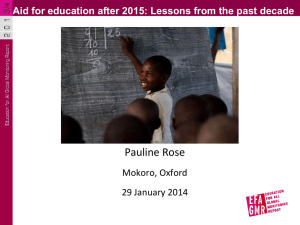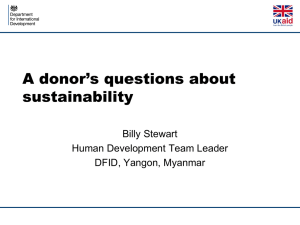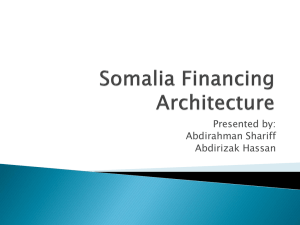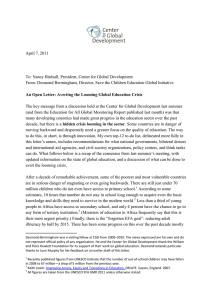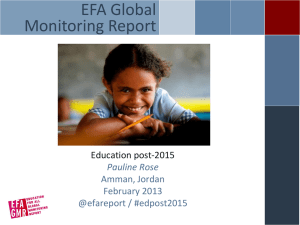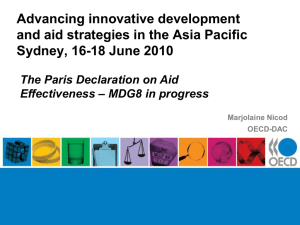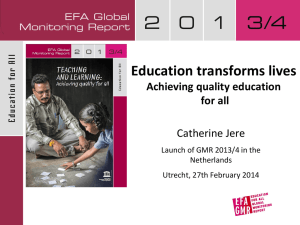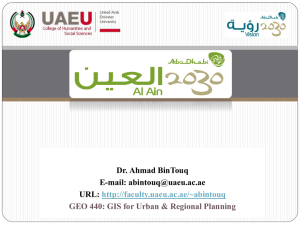Education post-2015: Equity, measurability and finance
advertisement
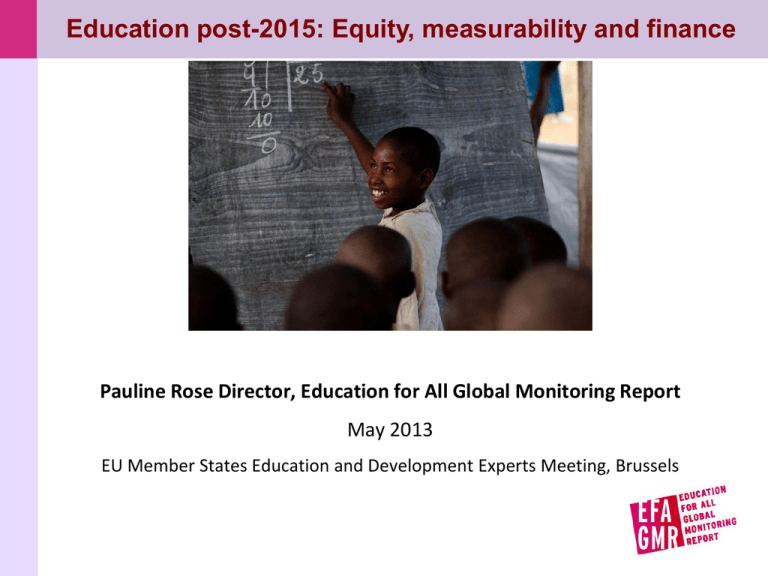
Education post-2015: Equity, measurability and finance Pauline Rose Director, Education for All Global Monitoring Report May 2013 EU Member States Education and Development Experts Meeting, Brussels Development begins with a good education Need to reach out to noneducation specialists to say education is key to catalyst change Present new analysis on effects of education to extend Education Counts campaign: to be released beginning of September for the UN General Assembly Economic benefits Education: Reduces poverty Enhances shared prosperity for all Creates better jobs Healthy lives Education: Reduces child and maternal mortality Reduces child malnutrition Increases child vaccinations Healthy societies Education: Empowers women Promotes democracy and good governance Improves knowledge and attitudes towards environmental sustainability One overarching goal for global framework Dakar: Equitable quality lifelong education and learning for all GMR: Ensure that by 2030, everyone has an equal opportunity to learn the basics, whatever their circumstances Save the Children: By 2030 we will ensure all children receive a good-quality education and have good learning outcomes GCE: By 2030, all children and youth are receiving a quality preprimary, primary, and lower secondary education Basic Education Coalition: By 2030, all children and youth should complete primary and lower secondary education which enables them to meet measurable learning standards and acquire relevant skills so they may become responsible, productive members of society Five individual goals: Equity, measurability and finance Overall goal: Ensure that by 2030, everyone has an equal opportunity to learn the basics, whatever their circumstances 1. Completion of early childhood education, primary education and lower secondary education 2. Quality of early childhood care and education, primary education and lower secondary education 3. Acquisition of youth and adult skills 4. Elimination of inequalities 5. Financing of education Equity Individual goals: Average years of schooling misleading measure of progress Rwanda and Nigeria, 17-22 year olds. Less than four years of schooling Nepal, 17-22 year olds. Mean years of education, 2001-2011 www.education-inequalities.org Need to track lowest performing group Ethiopia, Never been to school aged 7-16 years, 2011 www.education-inequalities.org Why we need a financing goal Total aid to education disbursements, 2002 to 2010 2010: US $3 billion spent on basic education in low income countries By 2030, ensure that no country is prevented from achieving education goals by a lack of resources Source: OECD-DAC (2012). Filling the $26 billion financing gap for basic education Average annual resources needed to finance basic education (2012-2015) US $53 billion US $ billion Donors: Meet 0.7% target 1.3 Financing gap US $26 billion DAC Aid US $3 billion Government expenditure US $25 billion Donors: Reallocate student imputed costs 2.4 Remaining financing gap 3.4 Donors: Prioritise basic education 4.0 Government: Increase tax base 7.3 Government: Prioritise basic education 7.5 Extending goals to lower secondary widens finance gap to $38 bil Average annual resources needed to finance basic and secondary education (2012-2015) US $77 billion US $ billion Financing gap US $38 billion Donors: Meet 0.7% target 1.3 Donors: Reallocate student imputed costs 3.1 DAC Aid US $3 billion Government expenditure US $36 billion Remaining financing gap 7.6 Donors: Prioritise basic & lower secondary education 6.1 Government: Increase tax base 9.9 Government: Prioritise basic education 9.8 EFA Global Monitoring Report www.efareport.unesco.org Blog: efareport.wordpress.com Twitter: @efareport #edpost2015
